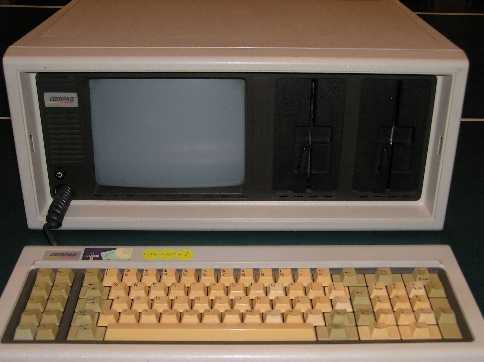





|
NAME |
Portable |
|
MANUFACTURER |
Compaq |
|
TYPE |
Transportable |
|
ORIGIN |
U.S.A. |
|
YEAR |
January 1983 (April 1984 European Release) |
|
KEYBOARD |
Full-stroke detachable keyboard with function keys and numeric keypad |
|
CPU |
Intel 8088 |
|
SPEED |
4.77 Mhz |
|
COPROCESSOR |
Optional 8087 math coprocessor |
|
RAM |
128 kb, up to 256 kb (and even 640k via IBM PC bus cards) |
|
TEXT MODES |
80x25, 40x25 - 9'' Mono CRT Display Built-in |
|
GRAPHIC MODES |
CGA, MDA |
|
COLORS |
Green phosphor monitor |
|
SIZE / WEIGHT |
34 lbs |
|
I/O PORTS |
Parallel Port, RS-232 Serial Port, CGA and composite video output, 5 x 8-bit ISA expansion slots |
|
BUILT IN MEDIA |
2 x 5.25'' floppies at 160 KB, 320 KB, and 360 KB. |
|
OS |
MS-DOS 1.1 |
|
POWER SUPPLY |
Built-in PSU, 130 Watt power supply (the smallest and most powerful per cubic inch made to that date) |
|
PRICE |
US$2995 |
|
Compaq Portable
|
|
Compaq Portable |
|
answer vaguely to questions). They took IBM's BIOS apart and made
notes of the system calls contained within it. That way, Compaq was able to develop a PC compatible
without any risk of a lawsuit from IBM, since the code was written from scratch (reverse engineering).
It cost them $1 million to do it.
|
